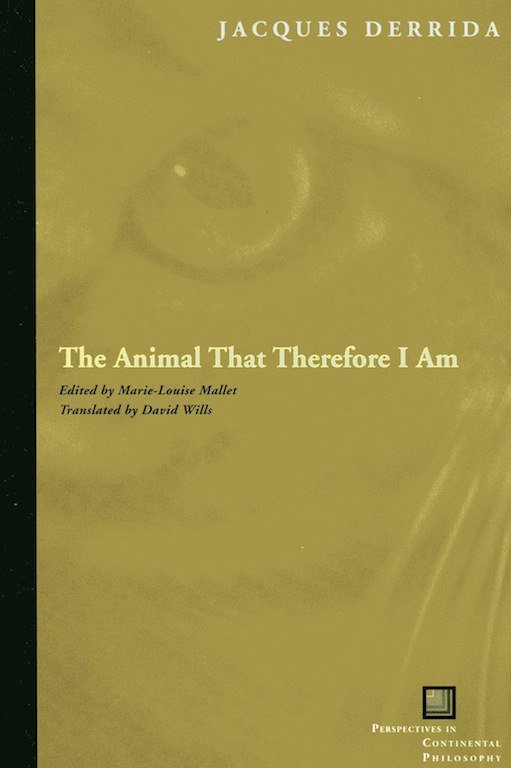

\"The Animal That Therefore I Am\" by Jacques Derrida - Comprehensive Book Summary
\"The Animal That Therefore I Am\" (L\'animal que donc je suis) is Jacques Derrida\'s profound philosophical meditation on the relationship between humans and animals, published posthumously and based on lectures he delivered in the 1990s. This work represents one of Derrida\'s most accessible yet challenging explorations of fundamental questions about consciousness, language, mortality, and what constitutes the human condition. The book begins with Derrida\'s famous anecdote of standing naked before his cat and feeling shame, using this moment of interspecies encounter to launch a comprehensive deconstruction of Western philosophy\'s traditional distinctions between human and animal existence.
Derrida systematically critiques the philosophical tradition from Aristotle through Heidegger, Lacan, and Levinas, examining how Western thought has consistently defined humanity in opposition to animality through various criteria such as reason, language, consciousness of death, and moral responsibility. He argues that this binary opposition - what he terms the \"abyssal rupture\" between human and animal - has served to justify human dominance over other species while obscuring the complexity and diversity of animal life. Rather than accepting the singular category of \"the animal\" that encompasses all non-human life, Derrida proposes thinking about \"animots\" (a play on the French \"animaux\" meaning animals), emphasizing the irreducible plurality and singularity of different animal beings.
The philosopher explores the question of animal suffering and consciousness, challenging the Cartesian view that animals are mere machines without genuine experience. He examines how animals respond to their environment, form relationships, and exhibit behaviors that suggest complex inner lives, even if these experiences differ fundamentally from human consciousness. Derrida particularly focuses on the question of whether animals possess language, arguing that while they may not have human-style symbolic language, they engage in sophisticated forms of communication and meaning-making that philosophy has traditionally overlooked or dismissed.
Central to Derrida\'s argument is his analysis of the \"gaze\" between human and animal, using his encounter with his cat to explore themes of shame, nakedness, and mutual recognition. He suggests that when an animal looks at a human, it sees and judges in ways that challenge human assumptions about consciousness and subjectivity. This intersubjective encounter reveals the vulnerability and finitude that humans share with animals, undermining the supposed absolute difference between species. The book explores how this recognition of shared mortality and suffering could serve as the foundation for a more ethical relationship with non-human life.
Derrida also addresses the violence inherent in human-animal relationships, from industrial farming and laboratory experimentation to the symbolic violence of reducing animals to mere resources or symbols. He connects this analysis to broader questions about sacrifice, hospitality, and justice, exploring how the treatment of animals reflects and reinforces other forms of domination and exclusion in human society. The philosopher examines religious and cultural traditions of animal sacrifice, showing how these practices both acknowledge and deny the similarity between human and animal suffering.
Throughout the work, Derrida employs his characteristic deconstructive method to reveal the instabilities and contradictions within seemingly stable concepts like \"human nature\" and \"animal instinct.\" He shows how the attempt to define humanity in opposition to animality inevitably fails because humans remain embodied, mortal, and vulnerable beings who share fundamental characteristics with other animals. The book concludes by suggesting that recognizing our animality - our shared condition of finite, embodied existence - might open possibilities for more ethical relationships both with other animals and with fellow humans. Derrida\'s work challenges readers to reconsider basic assumptions about consciousness, identity, and moral responsibility while developing a more nuanced understanding of the complex relationships that connect all living beings. This influential text has become essential reading for scholars in animal studies, environmental ethics, and continental philosophy, while also speaking to broader contemporary concerns about animal rights, ecological crisis, and the need for more sustainable and compassionate relationships with the natural world.






















.jpg)




.jpeg)









.jpeg)


.jpg)
.jpg)
.png)



.jpg)

.jpg)






.jpg)





.jpeg)






.jpeg)


.jpg)

.jpeg)













.jpg)




